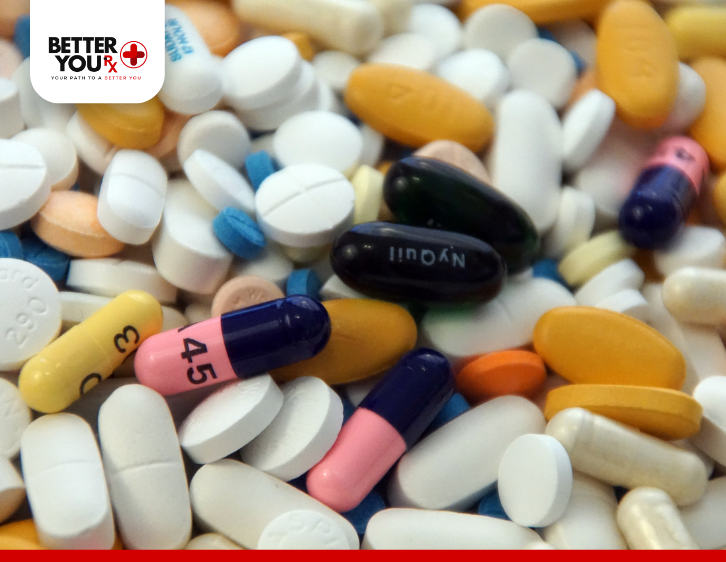Unlocking the Benefits of Nesina for Type 2 Diabetes
Managing type 2 diabetes effectively requires more than just diet and exercise—choosing the right medication plays a crucial role in maintaining healthy blood sugar levels. One medication making waves in diabetes care is Nesina (alogliptin), a DPP-4 inhibitor designed to improve glycemic control. This once-daily oral pill offers convenience and effectiveness, but how does it stack up against other treatment options? In this article, we’ll explore the benefits of Nesina, how it works, potential side effects, and considerations for patients. If you’re curious about whether Nesina might be the right fit for your diabetes management plan, read on!

Understanding How Nesina Works in the Body
Nesina belongs to a class of medications known as dipeptidyl peptidase-4 (DPP-4) inhibitors, which work by increasing the levels of incretin hormones in the body. These hormones help regulate insulin production, particularly after meals. Nesina prevents the breakdown of these hormones, enabling your body to produce more insulin when needed and reduce glucose production by the liver.
What makes Nesina an attractive option for patients with type 2 diabetes is that it allows for better post-meal blood sugar control without causing severe hypoglycemia, which is a common side effect with some other diabetes medications. Whether taken alone or in combination with other drugs, Nesina helps maintain more stable blood sugar levels throughout the day.
Key Benefits of Nesina for Diabetes Management

Nesina offers several significant benefits for people managing type 2 diabetes. Below are some of the primary benefits of this medication:
- Effective at Lowering A1C Levels: Nesina is proven to reduce A1C levels, a critical measure of long-term blood sugar control. For patients struggling to maintain healthy levels with lifestyle changes alone, Nesina provides an effective solution.
- Once-Daily Dosage: The convenience of taking Nesina just once a day appeals to many patients. You don’t have to worry about taking multiple doses or coordinating with meals. This ease of use enhances medication adherence, a crucial factor in managing chronic conditions like diabetes.
- Minimal Risk of Hypoglycemia: Unlike older diabetes medications, such as sulfonylureas, which carry a higher risk of causing dangerously low blood sugar, Nesina has a much lower risk of hypoglycemia when used correctly. This makes it a more secure choice for numerous patients.
- Weight-Neutral: One of the biggest concerns for people on diabetes medications is weight gain. Nesina has the advantage of being weight-neutral, meaning it does not typically cause weight gain or loss, making it suitable for patients who are closely monitoring their weight.
Comparing Nesina with Other Diabetes Medications
While Nesina is effective, it’s important to compare it with other DPP-4 inhibitors, such as Januvia and Onglyza, to understand which medication might be best for your unique health profile. While all DPP-4 inhibitors work similarly to improve blood sugar control, Nesina is often regarded as a cost-effective option, especially for patients looking for affordable alternatives to expensive drugs.
In addition, Nesina is frequently recommended for patients with moderate kidney issues, as it doesn’t place excessive strain on the kidneys compared to some other medications. However, for patients with more complex health conditions, consulting a healthcare provider about which DPP-4 inhibitor is best suited to their needs is essential.
Who Should Consider Nesina?
Nesina is an excellent option for adults with type 2 diabetes who are looking for better blood sugar control, especially if they prefer an oral medication over injectables like insulin. However, Nesina is not recommended for everyone. It’s important to consider your overall health and specific needs:
- Kidney or Liver Conditions: Nesina is often prescribed for patients with mild to moderate kidney issues since it has fewer adverse effects on the kidneys than some other diabetes medications. However, patients with severe kidney disease should discuss the risks carefully with their healthcare provider.
- Heart Disease: People with heart failure or a history of heart disease should exercise caution, as there have been reports linking Nesina to certain cardiovascular issues. Close monitoring by your healthcare team can help mitigate risks.
- Combination Therapy: If you are already on other diabetes medications such as metformin or insulin, Nesina can be safely added to your regimen, but you should be monitored to avoid hypoglycemia.
Potential Side Effects and Risks of Nesina
Although Nesina is generally well-tolerated, like all medications, it comes with potential side effects. Common side effects include:
- Headaches and cold-like symptoms (such as a sore throat and stuffy nose).
- More severe, but rare, side effects include joint pain, pancreatitis, or heart-related complications. Patients with a history of pancreatitis or heart conditions should be particularly mindful of these risks and seek immediate medical attention if they experience symptoms such as severe stomach pain, difficulty breathing, or swelling in the legs.
Combining Nesina with Lifestyle Changes

For optimal diabetes management, medication is just one piece of the puzzle. Nesina works best when used alongside lifestyle changes such as:
- Following a healthy, balanced diet: Limiting refined sugars and processed foods while focusing on high-fiber meals can help stabilize blood sugar.
- Regular physical activity: Exercise enhances insulin sensitivity, making it easier for your body to regulate blood sugar levels.
- Weight management: Maintaining a healthy weight is key to preventing complications and improving overall diabetes outcomes. By integrating Nesina with these changes, you can achieve more effective blood sugar control and reduce the risk of long-term complications.
Is Nesina Safe for Cardiovascular Health?
For people with type 2 diabetes, cardiovascular health is a significant concern, as diabetes increases the risk of heart disease. Although Nesina has not been found to significantly increase the risk of cardiovascular events, those with preexisting heart conditions should take extra precautions. Some studies have suggested that patients with a history of heart failure may experience complications while on Nesina, so regular monitoring by a healthcare provider is essential.
Managing Weight with Nesina: What You Should Know
Unlike some diabetes treatments, which can lead to weight gain, Nesina is weight-neutral. This makes it a viable option for patients who are concerned about maintaining a healthy weight while managing their blood sugar. Since weight management is a crucial part of controlling type 2 diabetes, Nesina’s neutral effect on weight is a significant benefit for many patients.
Pregnancy, Breastfeeding, and Nesina: Is It Safe?
For women managing type 2 diabetes during pregnancy or breastfeeding, it’s essential to carefully evaluate all medications. The safety of Nesina during pregnancy and breastfeeding is not well-established, so women who are pregnant or planning to become pregnant should discuss their options with their doctor. There may be alternative medications that are better suited for this phase of life.
Choosing Nesina for Better Diabetes Management
Nesina offers a convenient, effective solution for type 2 diabetes management. Its ability to lower blood sugar without causing weight gain or hypoglycemia makes it an attractive choice for many. As a once-daily medication, it also provides convenience, making it easier for patients to stay on track with their treatment plan.
For those looking to reduce their medication costs without compromising quality, Better You Rx offers affordable access to Nesina and other diabetes treatments. You can find Nesina on our website at betteryourx.com, where we provide quality medications that fit your healthcare needs. Take control of your diabetes management with Nesina today!





















